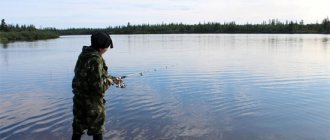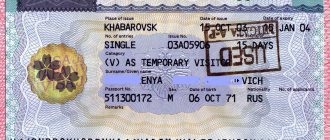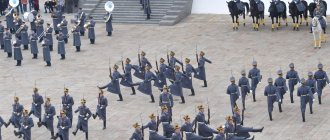Dispute over Kuril territory
Who owns these four island territories - Shikotan, Iturup, Kunashir and the Habomai Islands - is not an easy question.
Information from written sources points to the discoverers of the Kuril Islands - the Dutch. The Russians were the first to populate the territory of Chishimu. Shikotan Island and the other three were designated for the first time by the Japanese. But the fact of discovery does not yet provide grounds for ownership of this territory.
Shikotan Island
The island of Shikotan is considered the end of the world because of the cape of the same name located near the village of Malokurilsky. It impresses with its 40-meter drop into the ocean waters. This place is called the edge of the world due to the stunning view of the vastness of the Pacific Ocean. Shikotan Island translates as Big City. It stretches for 27 kilometers, measures 13 kilometers in width, and occupies an area of 225 square meters. km. The highest point of the island is the mountain of the same name, rising 412 meters. Part of its territory belongs to the state nature reserve.
Shikotan Island
Shikotan Island has a very rugged coastline with numerous bays, capes and cliffs.
Previously, it was thought that the mountains on the island were volcanoes that had ceased to erupt, with which the Kuril Islands abound. But they turned out to be rocks displaced by shifts of lithospheric plates.
A little history
Long before the Russians and Japanese, the Kuril Islands were inhabited by the Ainu. The first information from Russians and Japanese about the Kuril Islands appeared only in the 17th century. A Russian expedition was sent in the 18th century, after which about 9,000 Ainu became Russian citizens.
A treaty was signed between Russia and Japan (1855), called Shimodsky, where boundaries were established allowing Japanese citizens to trade on 2/3 of this land. Sakhalin remained no man's territory. After 20 years, Russia became the undivided owner of this land, then lost the south in the Russo-Japanese War. But during the Second World War, Soviet troops were still able to regain the south of Sakhalin and the Kuril Islands as a whole. A peace agreement was nevertheless signed between the victorious states and Japan, and this happened in San Francisco in 1951. And according to it, Japan has absolutely no rights to the Kuril Islands.
Treaty of Shimoda
But then the signing by the Soviet side did not happen, which was considered by many researchers to be a mistake. But there were serious reasons for this:
- The document did not specifically indicate what was included in the Kuril Islands. The Americans said that it was necessary to apply to a special international court for this. Plus, a member of the Japanese delegation announced that the southern disputed islands are not the territory of the Kuril Islands.
- The document also did not indicate exactly who would own the Kuril Islands. That is, the issue remained controversial.
In 1956, the USSR and the Japanese side signed a declaration preparing a platform for the main peace agreement. In it, the Country of the Soviets meets the Japanese halfway and agrees to transfer to them only the two disputed islands of Habomai and Shikotan. But with a condition - only after signing a peace agreement.
Signing of the Soviet-Japanese Declaration. Moscow, October 19, 1956
The declaration contains several subtleties:
- The word “transfer” means that they belong to the USSR.
- This transfer will actually take place after the signatures on the peace treaty have been signed.
- This applies only to the two Kuril Islands.
This was a positive development between the Soviet Union and the Japanese side, but it also caused concern among the Americans. Thanks to Washington pressure, the Japanese government completely changed ministerial positions and new officials who took high positions began to prepare a military agreement between America and Japan, which began to operate in 1960.
After this, a call came from Japan to give up not two islands offered to the USSR, but four. America puts pressure on the fact that all agreements between the Country of Soviets and Japan are not necessary to be fulfilled, they are supposedly declarative. And the existing and current military agreement between the Japanese and the Americans implies the deployment of their troops on Japanese territory. Accordingly, they have now come even closer to Russian territory.
Based on all this, Russian diplomats stated that until all foreign troops are withdrawn from its territory, a peace agreement cannot even be discussed. But in any case, we are talking about only two islands in the Kuril Islands.
As a result, American security forces are still located on Japanese territory. The Japanese insist on the transfer of the 4 Kuril Islands, as stated in the declaration.
The second half of the 80s of the 20th century was marked by the weakening of the Soviet Union and in these conditions the Japanese side again raises this topic. But the dispute over who will own the South Kuril Islands remains open. The Tokyo Declaration of 1993 states that the Russian Federation is the legal successor of the Soviet Union, and accordingly, previously signed papers must be recognized by both parties. It also indicated the direction to move towards resolving the territorial affiliation of the disputed four Kuril Islands.
Boris Yeltsin during a visit to Japan, 1993.
The advent of the 21st century, and specifically 2004, was marked by the raising of this topic again at a meeting between Russian President Putin and the Prime Minister of Japan. And again everything happened again - the Russian side offers its conditions for signing a peace agreement, and Japanese officials insist that all four South Kuril Islands be transferred to their disposal.
2005 was marked by the Russian president's willingness to end the dispute, guided by the 1956 agreement, and transfer two island territories to Japan, but Japanese leaders did not agree with this proposal.
In order to somehow reduce tensions between the two states, the Japanese side was offered to help develop nuclear energy, develop infrastructure and tourism, and also improve the environmental situation, as well as security. The Russian side accepted this proposal.
At the moment, for Russia there is no question of who owns the Kuril Islands. Without any doubt, this is the territory of the Russian Federation, based on real facts - based on the results of the Second World War and the generally recognized UN Charter.
Unresolved Kuril Islands dispute
The problem of the Kuril Islands lies in the unresolved dispute between the Japanese and Russian sides over who owns them. And it has remained open since the Second World War.
After the war, the Kuril Islands became part of the USSR. But Japan considers the territories of the southern Kuril Islands, and these are Iturup, Kunashir, Shikotan with the Habomai group of islands, its territory, without having a legal basis. Russia does not recognize the fact of a dispute with the Japanese side over these territories, since their ownership is legal.
Dispute about the ownership of the Kuril Islands on the map
The problem of the Kuril Islands is the main obstacle to a peaceful settlement of relations between Japan and Russia.
Russian cities in Japan
Currently, according to experts, the number of Russian-speaking residents of Japan is about 10,000 people. The main part are emigrants of the last three decades. The majority are scientists and highly qualified employees, students and Russian girls married to Japanese men.
The history of the appearance of Russians in Japan
It is believed that the Russians first visited Japan in 1739: the Russian navigator Martyn Shpanberg and his team visited the small town of Kamogawa, located on the island of Honshu. More than 20 years earlier, traveler Ivan Petrovich Kozyrevsky compiled a map of the island based on the stories of local residents - the Ainu, washed up by a storm on the shores of Kamchatka.
The history of official relations between the two states begins in 1804: Russian diplomat, entrepreneur and traveler Nikolai Rezanov becomes the first Russian ambassador to Japan. He was appointed by Emperor Alexander I, who believed that Rezanov would be able to establish trade and diplomatic relations with the state, which had previously followed a policy of isolation for more than 150 years. The ambassador reached his destination as part of the first Russian round-the-world expedition under the command of Kruzenshtern.
After the end of the isolation policy, missionaries from all over the world began to move here, as well as residents of neighboring territories, including the Far East. The formation of the Russian diaspora begins in 1861: Russian missionaries build an Orthodox church and a hospital here. The founder of the Russian Orthodox Church in the Land of the Rising Sun is considered to be Archbishop Nicholas of Japan, who was later canonized.
The second wave occurred in the post-revolutionary period, for which it received the name “White”. The main flows of migrants crossed the border from the territory of Manchuria or the adjacent lands of the Far East. The main cities of resettlement were Tokyo, Yokohama, and Hakodate. However, in 1923 there was a devastating earthquake, which forced a significant part of the migrants to move to the port city of Kobe on the island of Honshu.
Despite the political opening of Japan's borders, migrants in the country were still treated with caution, so their number decreased annually:
- 1918 — 7 251;
- 1920 — 3 150;
- 1930 — 1 666.
After the end of World War II, a small part of the Russian-speaking population moved to Japan, mostly having escaped from the camps and not wanting to stay in their homeland, as well as immigrants from China, which had become communist. In the 70-80s, there was an increase in Russian speakers due to interethnic marriages. In subsequent periods, no serious migration waves were observed, and relocations were sporadic.
After the collapse of the USSR, the migration of Russians to Japan resumed, but was not massive due to the migration policy of the host state. However, compared to 1985, by 1995 the number of Russian citizens permanently or temporarily residing here increased more than 8 times:
- 1985 — 322;
- 1990 — 440;
- 1995 — 2 169;
- 2004 — 7 164.
The descendants of the first wave of immigrants have completely assimilated, most of them do not know Russian and self-identify as Japanese. Interestingly, Russian is one of the most popular languages among foreign languages: it is studied in every tenth higher educational institution in the state. On average, the Russian-speaking population increases by 300 people annually. The Russian diaspora cannot be called large: 10,000 people are lost compared to the country's more than 126 million population.
Japanese cities associated with Russia include:
Tokyo is the most active Russian diaspora
The vast majority of migrants in recent years live and work in Tokyo. According to some estimates, their number is about 3000-5000 people. Basically, these are highly qualified specialists and scientists working in international and national companies. A small proportion are Russian women who married Japanese.
There is a Russian cultural center in Tokyo, a private secondary school teaching the Russian language, and meetings for migrants and guests of the country. The diaspora cannot be called large: in 2021, about 300 people visited the center. Activists of the group regularly organize meetings and joint visits to cultural and entertainment events. Evenings of national culture, literary, musical, and creative meetings are held.
Nemuro - Russian-speaking population near the disputed Kuril Islands
One of the most Russian cities with a rich history is Nemuro, located on the island of Hokkaido. The location of the territory near the disputed Kuril Islands provided the opportunity for interaction between the local Ainu population and Russian and Japanese residents. The city acted as a place of exile for former residents of Sakhalin and the Kuril Islands - a kind of Japanese Siberia.
Despite the fact that the island was formally under foreign jurisdiction, in 1799 a small fleet of fishermen and sailors under the leadership of Shabalin and Antipin entered the Notcomo harbor. As a result, about 1,500 Ainu were subject to tribute and included in the Russian state as subjects.
However, the subsequent active Japanese colonization and the influx of settlers in the 19th century put an end to the situation. Since the 1990s, strong trade relations have been established here with Russia.
Thanks to this, you can see few bilingual signs of shops and cafes on city streets, but most of these signs remind you that the territory of the Kuril Islands belongs to the Japanese.
Nagasaki - the city of diplomatic failure
In September 1804, the first Russian ambassador to Japan, Rezanov, as part of a round-the-world expedition, entered Nagasaki Bay. However, the Japanese government prohibited the ship from approaching the shore and its crew from going ashore. Ryazanov was allowed to leave the ship, settled in decent housing, but was forbidden to leave it or negotiate with the government of the country.
Six months later, the Emperor of Japan refused to allow the ambassador to organize trade, political and economic relations, after which Rezanov had to leave the country. To date, there is no accurate information about the number of Russian-speaking population in Nagasaki.
Source: https://travelask.ru/articles/russkie-goroda-v-yaponii
Far East
The Far Eastern territories of Russia overlook two oceans - the Arctic and the Pacific, and have maritime borders with Japan and the United States. In this region, there are problems with defining the border along the Bering Strait. In addition, there are difficulties with which state belongs to some of the islands of the Lesser Kuril chain. This long-standing dispute arose back in the 19th century and their ownership is still disputed by the Japanese side.
The protection of the Far Eastern borders has always been problematic, since neighbors constantly make claims over Russian-owned islands and adjacent water areas. In this regard, the Foundation for Advanced Research announced that a special underwater robot will be created in Primorye that will detect any moving objects and determine their coordinates. Even silent ships will not be able to deceive the vigilance of this apparatus.
Unmanned underwater robots will be able to independently guard Russia’s maritime borders, monitor a given water area and transmit information to the shore. Such a robotic submarine has already been developed at the Far Eastern Branch of the Russian Academy of Sciences. They are working on its creation at the Institute of Marine Technology Problems in a special laboratory dedicated to underwater robotics. And this is not the first experience in creating such devices: automated media for various purposes have already been created within these walls. The length of Russia's maritime borders is such that it requires well-organized protection and a huge amount of resources, including human resources.
Neighbours
Russia's closest neighbors are Japan and the United States, since these countries are separated from it by narrow straits. The United States of America and the Russian Federation are separated by the Bering Strait, located between the Russian Ratmanov Island and the American Kruzenshtern Island. The border with Japan is located between Sakhalin, the South Kuril Islands on one side and the island of Hokkaido on the Japanese side. The main oceanic neighbor is Canada. The maritime borders of Russia and Canada are separated by the Arctic Ocean.
This is the longest border line, passing through the Chukchi, East Siberian, Kara, Barents Seas, as well as the Laptev Sea. According to international agreements, in the nearby ocean, Russia owns all internal waters, such as the White Sea, the Czech and Pechora Bays, territorial bodies of water along the coast of all seas (sixteen nautical miles long), as well as two hundred miles of the economic zone beyond the territorial ones, which is over 4 million square kilometers. Russia's maritime borders span ten time zones from west to east.
Northern Sea Route
Russia has the right to explore territorial resources and develop them, to produce seafood and fish in the economic zone. The vast shelf spaces of the Arctic Ocean have concentrated gas and oil resources in gigantic quantities: approximately twenty percent of all world reserves. The most important northern ports of the Russian Federation are Arkhangelsk and Murmansk, which are connected to the mainland by railways.
It is from there that the Northern Sea Route originates, which passes through all seas, and then through the Bering Strait to Vladivostok in the Pacific Ocean. Most of the northern seas are covered with thick ice almost all year round. But caravans of ships follow powerful icebreakers, including nuclear ones. And yet, navigation there is very short; within three months it is simply impossible to transfer all the cargo. Therefore, the Arctic highway along the border of the Russian Federation is now being prepared for launch, on which nuclear submarines will handle transportation.
Vietnam issue
In early June, Japanese authorities resumed flights with Vietnam. The head of the Japanese Foreign Ministry, T. Motegi, announced this at a press conference.
According to the official, about 450 Japanese citizens plan to visit Vietnam by the end of June. Initially, a limited number of people will be allowed on Japan-Vietnam flights. Entrepreneurs and scientists will be the first to appear on the list.
All passengers will be required to undergo PCR testing twice – upon departure and upon arrival. All travelers will also be required to undergo a 14-day quarantine.
Treaty of San Francisco
Japan, which was occupied by US troops, was given the opportunity to conclude a peace treaty with the victors at an international conference in San Francisco in September 1951. Tokyo signed a peace treaty with 48 countries participating in the anti-fascist coalition, thereby renouncing “all rights, legal grounds and claims to the Kuril Islands.” However, the document did not stipulate in favor of which state Japan was giving up the territories. In addition, representatives of some countries that suffered from Japanese aggression (primarily the PRC) were not invited to the conference, as a result of which the Soviet delegation that came to the conference refused to sign a peace treaty, considering it incompetent.











